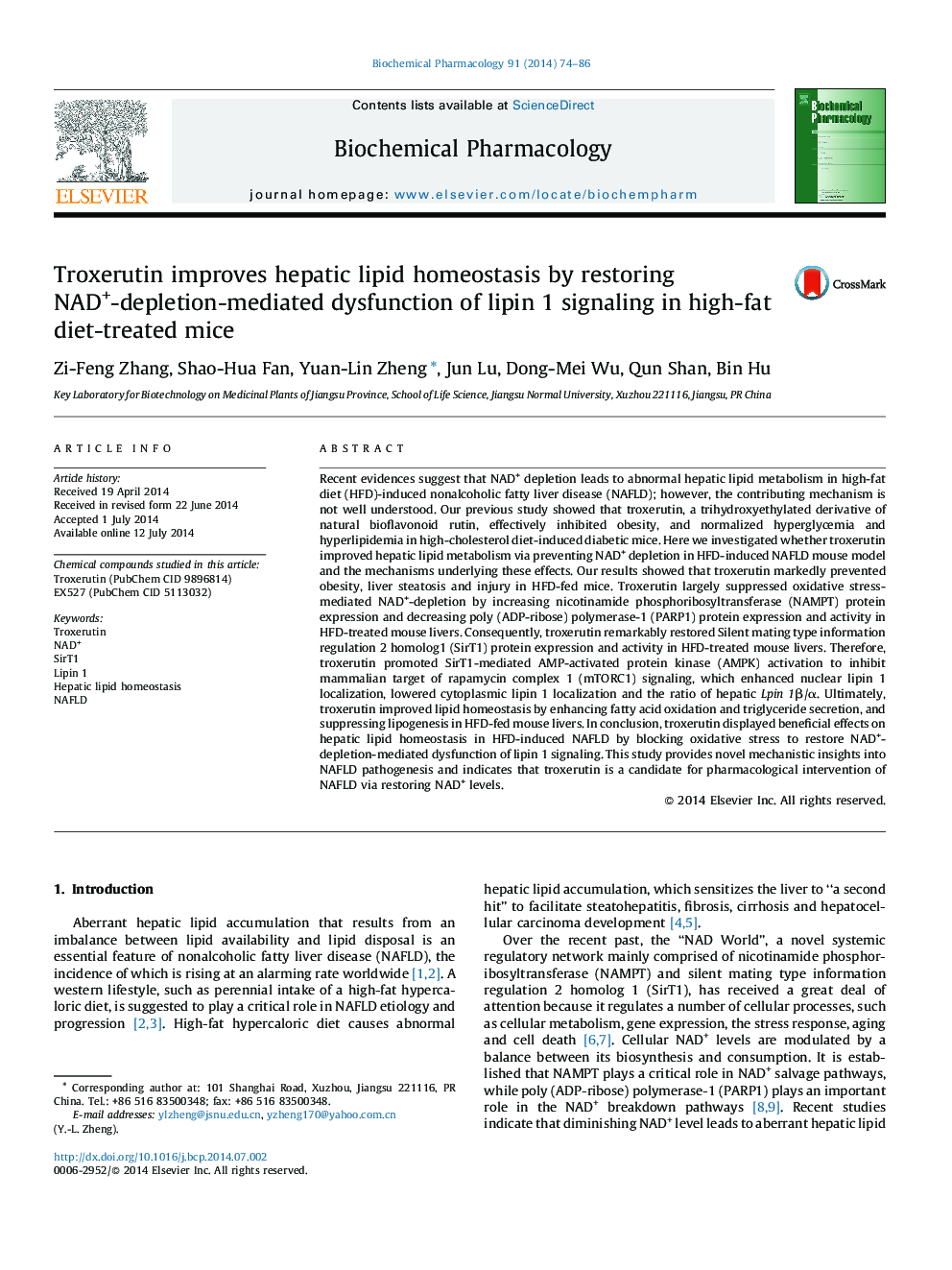| Article ID | Journal | Published Year | Pages | File Type |
|---|---|---|---|---|
| 2512302 | Biochemical Pharmacology | 2014 | 13 Pages |
Recent evidences suggest that NAD+ depletion leads to abnormal hepatic lipid metabolism in high-fat diet (HFD)-induced nonalcoholic fatty liver disease (NAFLD); however, the contributing mechanism is not well understood. Our previous study showed that troxerutin, a trihydroxyethylated derivative of natural bioflavonoid rutin, effectively inhibited obesity, and normalized hyperglycemia and hyperlipidemia in high-cholesterol diet-induced diabetic mice. Here we investigated whether troxerutin improved hepatic lipid metabolism via preventing NAD+ depletion in HFD-induced NAFLD mouse model and the mechanisms underlying these effects. Our results showed that troxerutin markedly prevented obesity, liver steatosis and injury in HFD-fed mice. Troxerutin largely suppressed oxidative stress-mediated NAD+-depletion by increasing nicotinamide phosphoribosyltransferase (NAMPT) protein expression and decreasing poly (ADP-ribose) polymerase-1 (PARP1) protein expression and activity in HFD-treated mouse livers. Consequently, troxerutin remarkably restored Silent mating type information regulation 2 homolog1 (SirT1) protein expression and activity in HFD-treated mouse livers. Therefore, troxerutin promoted SirT1-mediated AMP-activated protein kinase (AMPK) activation to inhibit mammalian target of rapamycin complex 1 (mTORC1) signaling, which enhanced nuclear lipin 1 localization, lowered cytoplasmic lipin 1 localization and the ratio of hepatic Lpin 1β/α. Ultimately, troxerutin improved lipid homeostasis by enhancing fatty acid oxidation and triglyceride secretion, and suppressing lipogenesis in HFD-fed mouse livers. In conclusion, troxerutin displayed beneficial effects on hepatic lipid homeostasis in HFD-induced NAFLD by blocking oxidative stress to restore NAD+-depletion-mediated dysfunction of lipin 1 signaling. This study provides novel mechanistic insights into NAFLD pathogenesis and indicates that troxerutin is a candidate for pharmacological intervention of NAFLD via restoring NAD+ levels.
Graphical abstractFigure optionsDownload full-size imageDownload as PowerPoint slide
